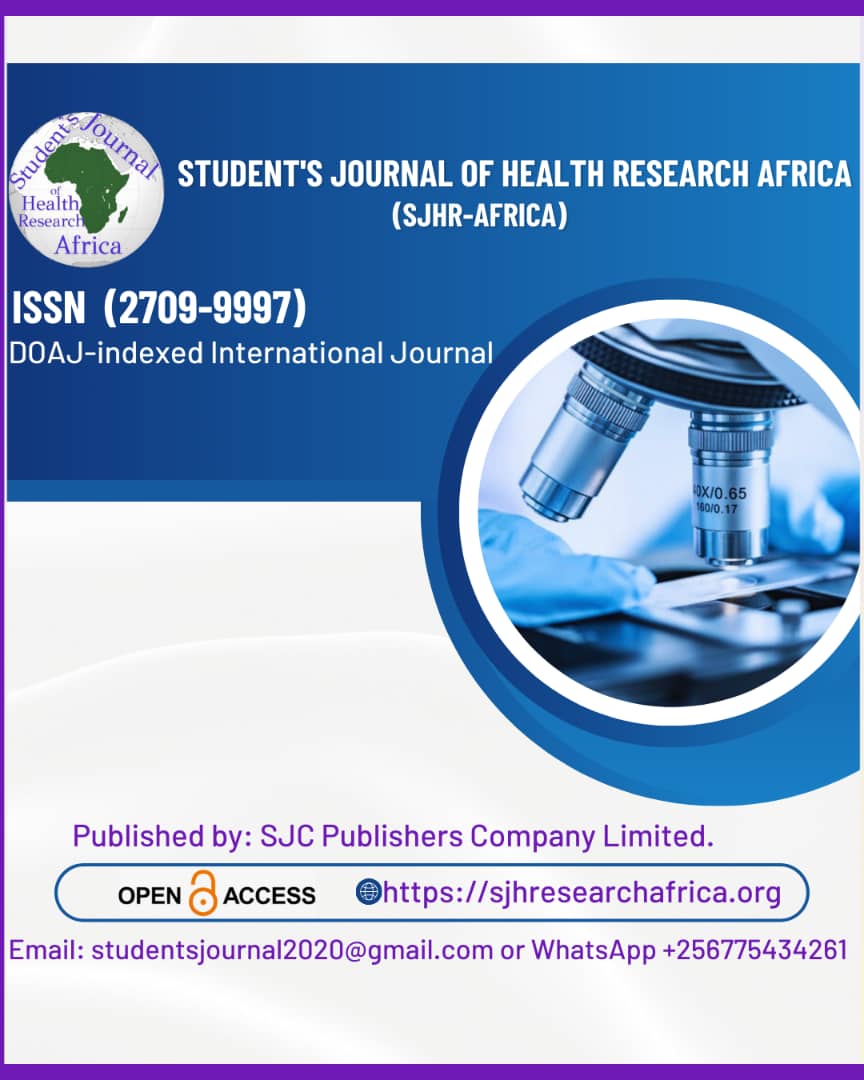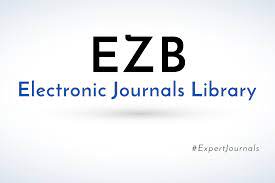Estimation of lipid profile in patients with pulmonary tuberculosis: A cross-sectional observational study.
DOI:
https://doi.org/10.51168/sjhrafrica.v6i9.2054Keywords:
Pulmonary tuberculosis, Lipid profile, Hypocholesterolemia, High-density lipoprotein, Body mass index, Nutritional status, Disease severityAbstract
Background
A significant worldwide health concern is pulmonary tuberculosis (TB) with well-documented effects on host metabolism. Lipid disturbances, particularly hypocholesterolemia and reduced HDL cholesterol, are common in TB and may reflect both nutritional status and disease severity. Understanding these changes can aid in clinical management and nutritional intervention.
Methods
In this resaecrh study was carried on 101 confirmed pulmonary TB patients. Data on demographics, BMI, lifestyle habits, and radiological severity were recorded. Various lipid parameters were measured. Statistical analysis included t-tests, ANOVA, and Pearson correlation, with significance level at p<0.05.
Results
The mean age was 51.73 years, with 64.4% male participants. Most patients had a normal BMI, but 16.8% were underweight. Mean lipid values were: total cholesterol 156.68 mg/dL, triglycerides 137.24 mg/dL, HDL cholesterol 34.54 mg/dL, LDL cholesterol 99.38 mg/dL, and VLDL cholesterol 12.53 mg/dL. BMI correlated positively with total cholesterol and LDL cholesterol, whereas disease severity correlated negatively with HDL cholesterol. Smoking showed no significant impact on cholesterol levels.
Conclusion
Pulmonary tuberculosis is associated with marked lipid abnormalities, particularly hypocholesterolemia and low HDL cholesterol, more pronounced in underweight individuals and those with severe disease. Lipid monitoring may serve as an adjunctive marker for disease assessment and prognosis.
Recommendation
Routine lipid profile testing should be considered in TB patients, with timely nutritional support aimed at correcting hypolipidemia to enhance recovery and treatment outcomes.
References
World Health Organization. Global tuberculosis report 2023. Geneva: WHO; 2023.
Pandey AK, Sassetti CM. Mycobacterial persistence requires the utilization of host cholesterol. Proc Natl Acad Sci U S A. 2008;105(11):4376-80. https://doi.org/10.1073/pnas.0711159105
Brzostek A, Pawelczyk J, Rumijowska-Galewicz A, Dziadek B, Dziadek J. Mycobacterium tuberculosis can accumulate and utilize cholesterol. J Bacteriol. 2009;191(21):6584-91. https://doi.org/10.1128/JB.00488-09
Feingold KR, Grunfeld C. The effect of inflammation and infection on lipids and lipoproteins. In: Feingold KR, Anawalt B, Boyce A, editors. Endotext [Internet]. South Dartmouth (MA): MDText.com, Inc.; 2000-.
Denis M, Ghadirian E. Granulocyte-macrophage colony-stimulating factor restricts growth of Mycobacterium avium and Mycobacterium tuberculosis in human macrophages. J Infect Dis. 1990;162(6):1398-402.
Kim JH, Park MH, Song YJ, Roh EY, Yoon JH, Park KU, et al. Changes in serum lipid profiles and body weight during treatment of tuberculosis. Clin Chem Lab Med. 2010;48(3):365-70.
Chandra RK, Sudhakaran L. Regulation of immune responses by nutrients. Adv Exp Med Biol. 1998; 445:161-8.
Norata GD, Catapano AL. Molecular mechanisms responsible for the anti-inflammatory and protective effect of HDL on the endothelium. Vascul Pharmacol. 2005;43(4):145-7.
Weiner J 3rd, Parida SK, Maertzdorf J, Black GF, Repsilber D, Telaar A, et al. Biomarkers of inflammation, immunosuppression and stress with active disease are revealed by metabolomic profiling of tuberculosis patients. PLoS One. 2012;7(7): e40221. https://doi.org/10.1371/journal.pone.0040221
Gupta KB, Gupta R, Atreja A, Verma M, Vishvkarma S. Tuberculosis and nutrition. Lung India. 2009;26(1):9-16. https://doi.org/10.4103/0970-2113.45198
Pérez-Guzmán C, Vargas MH, Quiñonez F, Bazavilvazo N, Aguilar A. A cholesterol-rich diet accelerates bacteriologic sterilization in pulmonary tuberculosis. Chest. 2005;127(2):643-51. https://doi.org/10.1378/chest.127.2.643
Deniz O, Tozkoparan E, Yaman H, Cakir E, Gumus S, Ozcan O, et al. Serum HDL-C levels, disease severity, and pulmonary tuberculosis outcome. Clin Biochem. 2007;40(13-14):1033-6.
Rao NA, Suryakar AN, Kumbar KM, Bhogade RB. Oxidative stress and antioxidant status in pulmonary tuberculosis patients. Indian J Clin Biochem. 2008;23(4):342-5.
Fessler MB. The challenges and promise of HDL therapeutics. Nat Rev Cardiol. 2016;13(5):342-55.
van Lettow M, Harries AD, Kumwenda JJ, Zijlstra EE, Clark TD, Taha TE, et al. Micronutrient malnutrition and wasting in adults with pulmonary tuberculosis with and without HIV co-infection in Malawi. BMC Infect Dis. 2004;4:61. https://doi.org/10.1186/1471-2334-4-61
Choi R, Jeong BH, Koh WJ, Lee SY. Changes in serum adiponectin levels in patients with active tuberculosis. Tuberc Respir Dis. 2014;76(5):210-5. https://doi.org/10.4046/trd.2014.76.2.66
Kumar NP, Moideen K, Banurekha VV, Nair D, Babu S. Plasma lipid profile in tuberculosis: implications for treatment outcome. Br J Nutr. 2017;117(6):794-802.
Martens GW, Arikan MC, Lee J, Ren F, Greiner D, Kornfeld H. Tuberculosis susceptibility of diabetic mice. Am J Respir Cell Mol Biol. 2007;37(5):518-24. https://doi.org/10.1165/rcmb.2006-0478OC
Craig WY, Palomaki GE, Haddow JE. Cigarette smoking and serum lipid and lipoprotein concentrations: an analysis of published data. BMJ. 1989;298(6676):784-8. https://doi.org/10.1136/bmj.298.6676.784
Lönnroth K, Williams BG, Cegielski P, Dye C. A consistent log-linear relationship between tuberculosis incidence and body mass index. Int J Epidemiol. 2010;39(1):149-55. https://doi.org/10.1093/ije/dyp308
Downloads
Published
How to Cite
Issue
Section
License
Copyright (c) 2025 Prasanjeet Sahu, Srinibas Sahoo

This work is licensed under a Creative Commons Attribution-NonCommercial-NoDerivatives 4.0 International License.





















